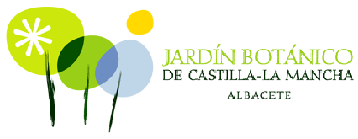Ethnopharmacological relevance
This paper has two overarching aims: (1) presenting the results of studying the Albacete tariff of medicines of 1526 and (2) broadly analyzing the origin and influences of medicinal traditional knowledge in the region of Albacete, Spain. We use historical and modern literature that may have influenced this knowledge. Our primary goal was to determine the ingredients used in the pharmacy in the 16th century CE in Albacete through the analysis of the tariff, and our secondary goal was to investigate until when ingredients and uses present in pharmacy and herbals persisted in later periods.
Methods
The identity of medicines and ingredients was determined by analyzing contemporary pharmacopoeias and classical pharmaceutical references. We analyzed further 21 sources (manuscripts, herbals, and books of medicines, pharmacopoeias, pharmacy inventories, and modern ethnobotanical records) for the presence/absence of ingredients and complex formulations of the tariff. Using factorial and cluster analysis and Bayesian inference applied to evolution models (reversible-jump Markov chain Monte Carlo), we compared textual sources. Finally, we analyzed the medicinal uses of the top 10 species in terms of frequency of citation to assess the dependence of modern ethnobotanical records on Renaissance pharmacy and herbals, and, ultimately, on Dioscorides.
Results
In Albacete 1526, we determined 101 medicines (29 simple drugs and 72 compound medicines) comprising 187 ingredients (85% botanical, 7.5% mineral, and 7.5% zoological substances). All composed medicines appear standardized in the pharmacopoeias, notably in the pharmacopoeia of Florence from 1498. However, most were no longer in use by 1750 in the pharmacy, and were completely absent in popular herbal medicine in Albacete 1995 as well as in Alta Valle del Reno (Italy) in 2014. Among the ingredients present in different formulation are the flowers of Rosa gallica, honey (Apis mellifera), the roots of Nardostachys jatamansi, and Convolvulus scammonia, pistils of Crocus sativus, grapes and raisins (Vitis vinifera), rhizomes of Zingiber officinale, bark of Cinnamomum verum, leaves and fruits of Olea europaea, mastic generally of Pistacia lentiscus, and wood of Santalum album. The statistical analysis of sources produces four well-separated clusters (Renaissance Herbals and Pharmacopoeias, Ethnobotany and Folk Medicine, Old phytotherapy, and Modern phytotherapy including Naturopathy) confirming our a priori classification. The clade of Renaissance Herbals and Pharmacopoeias appears separated from the rest in 97% of bootstrapped trees. Bayesian inference produces a tree determined by an initial set of two well-distinct core groups of ingredients: 64, locally used in Mediterranean Europe during centuries; and 45, imported, used in pharmacy during centuries. Complexity reached its maximum in Albacete 1526 and contemporary pharmacopoeias, gradually decreasing over time. The analysis of medicinal uses of the top 10 ingredients showed low coincidence between Dioscorides and different Renaissance herbals or medical treatises and of all of them with ethnobotany in Albacete.
Conclusions
Regarding our question: is there something new under the sun? In some aspects, the answer is “No”. The contrast between expensive drugs, highly valued medicines, and unappreciated local wild medicinal plants persists since the Salerno’s school of medicine. Old medicine in Mediterranean Europe, as reflected by Albacete 1526 tariff of medicines, involved strict formulations and preferences for certain ingredients despite other ingredients locally available but underappreciated. This confirms the fact that any system of medicine does not get to use all available resources. Ethnobiological records of materia medica, in rural areas of Albacete, describe systems with a high degree of stability and resilience, where the use of local resources, largely wild but also cultivated, is predominant in contrast with the weight of imported exotic products in pharmacy.


Leave a Reply